Ondeko, a traditional performing art of Sado Island
Ondeko (The durum of demon) is a drum & dance unit performs in Sado Island from the Edo era. The performers dance with a scary demon mask or a dubious old man’s mask and make the audience happy.
The drum of demon comes down to Sado Island in Niigata Prefecture is called “Ondeko” and this is the Shinto ritual performing art to pray for huge harvest, well-being of family, state of perfect health, prosperous business etc. and Ondeko go around the village houses one by one to keep off evil (to exorcise evil spirit).The origin of Ondeko is unknown, but it is said that Ondeko was influenced by Nogaku (Noh drama). It is said that the rhythm of the taiko was added to the Noh dance style, and the unique choreography was added to complete the form of Ondeko as we know it today. Noh drama is so popular on Sado Island that one-third of all Noh stages in Japan are located there. Currently, it is handed down around 120 villages and each village has different demon’s dance and rhythm of drum, however, Ondeko can be roughly divided as Aikawa style, Kuninaka style, Maehama style and so on.

In the Aikawa style, a performer called “Mamemaki (a person who sows beans)” wears an old man’s mask, an Eboshi (traditional hat), and a Suou (traditional clothes) and dances to the rhythm of drums while holding a Masu measure. There is also a “Mamemaki” dance by holding an eggplant or a huge dildo instead of a Masu measure. In the Aikawa style, demon will not appear, or even if they appear, they just hold Naginata and will not dance so much. In some communities, lions will appear in the performance.
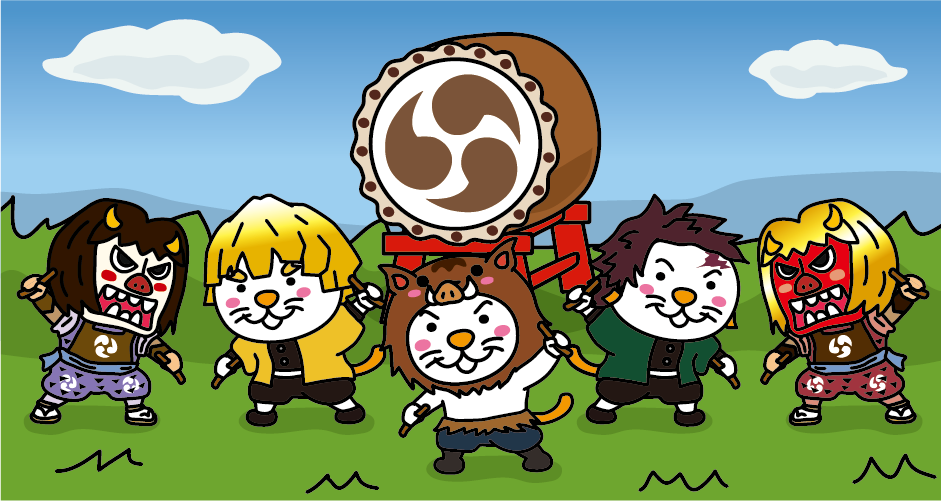
The Kuninaka style is the most popular Ondeko in Sado Island and its performance is also shown at sightseeing events. It is said that during the Edo period, people from the Katagami community taught Ondeko to people from other communities in the Kuninaka area, and it spread. Therefore, it is sometimes referred to as the Katagami style. The performance called “Shidarauchi (clapping beat)” which two demons beat huge drum alternately by shaking their bodies, and disheveling their hairs to the rhythm of jiuchi drum, will awe audience. Depending on the communities, a lion appears and it perform together with a demon.
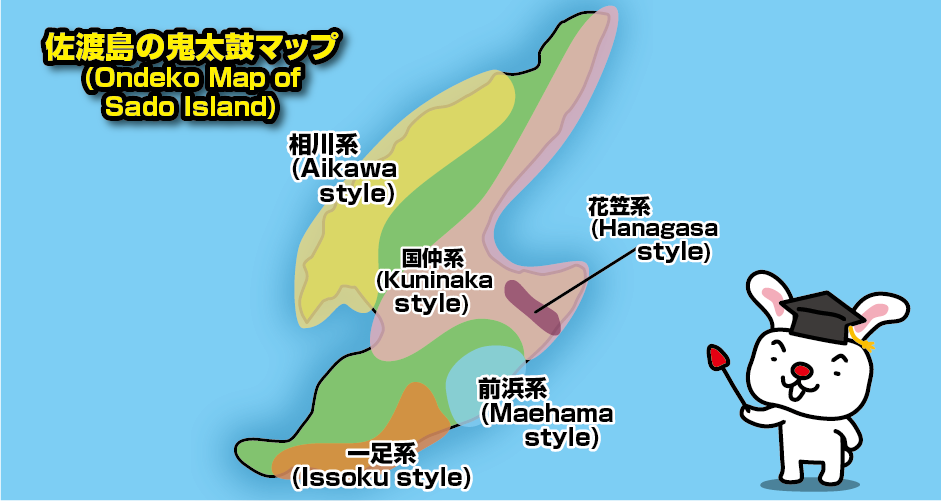
In the Maehama style, two demons dance facing each other, accompanied by drums and flutes. The facilitator, called Rouso (meaning “elderly monk”), shows off the gifts (money and goods) received at the *Kadozuke and makes amusing remarks, livening up the atmosphere of the festival. *Kadozuke is entertainment in which performers stand at the gates of houses and stores to show their skills, such as singing and dancing, for which they receive a reward.
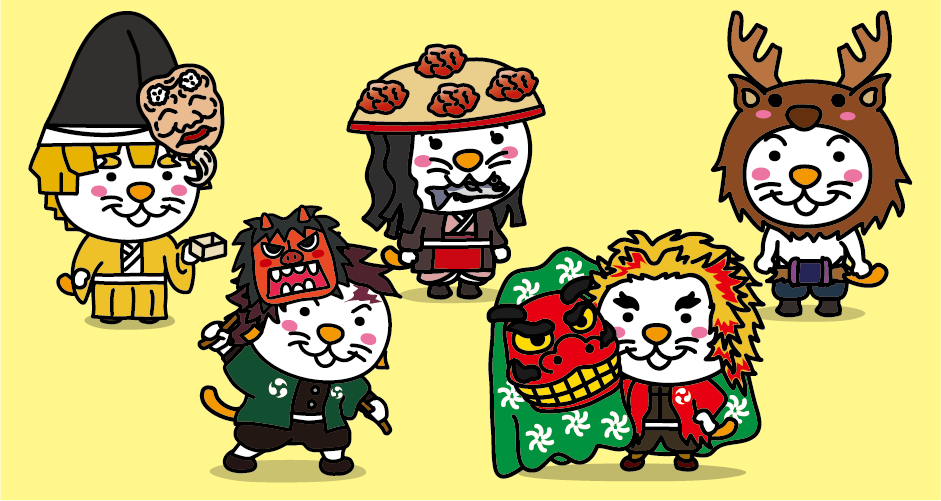
In addition to the traditional three styles, recent research on Ondeko has distinguished five types, including “Issoku (one-leg) style” and “Hanagasa style,” depending on how they dance. The Issoku style is characterized by dancing to the rhythm of drums as if the demon were jumping on one leg. It is the Ondeko dance that miners performed at the Sado Gold Mine during the Edo period. The Hanagasa style is called “Oni no Mai” (demon’s dance) because a lone demon dances gracefully with the children’s Hanagasa dance (traditional dance wearing conical hat adorned with flowers) and the three deer dance.
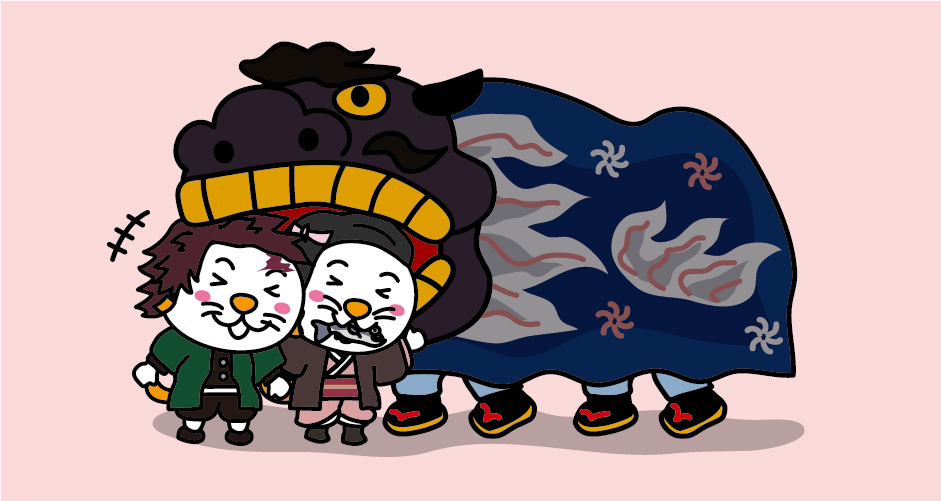
In the area opposite the mainland Niigata, at the foot of Kosado mountains, in addition to Ondeko, there are a huge lion pray for huge harvest, well-being of family, state of perfect health and walk through the village. There is a legend that if the huge lion bite your head, you can get rid of evil and stay by disease-free. The lion head is about the size of adult’s upper body fits, and 15 to 20 people will be in the body part.
Access to Sado Island
From Tokyo
It takes about 2 hours from JR Tokyo Station to JR Niigata Station by Joetsu Shinkansen. It takes about 15 minutes by local bus from JR Niigata Station to Niigata Port.
From Osaka
It takes about 1 hour from Itami Airport to Niigata Airport. It takes about 25 minutes by shuttle bus from Niigata Airport to Sado Kisen Niigata Port Terminal. From Sado Kisen Niigata Port Terminal to Sado Kisen Ryotsu Port Terminal, it takes about 1 hour by jetfoil and about 2 hours and 30 minutes by car ferry.






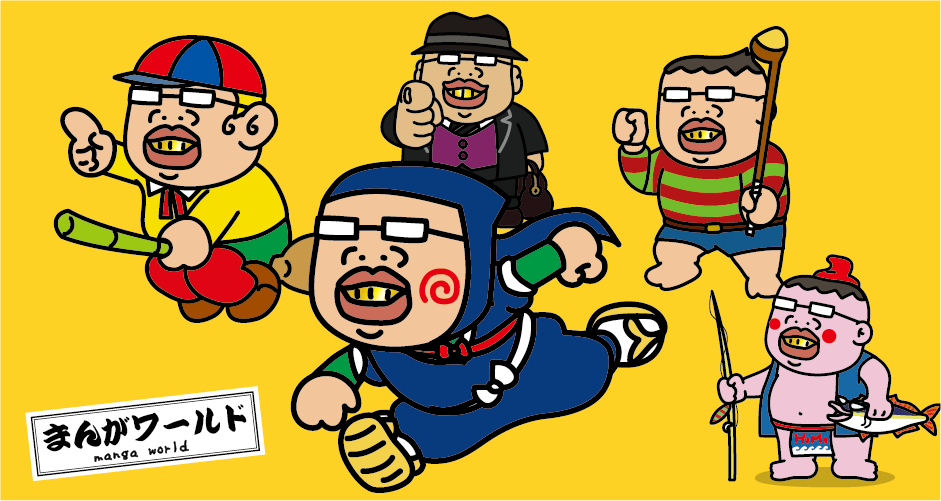



You need to login to comment on an article.